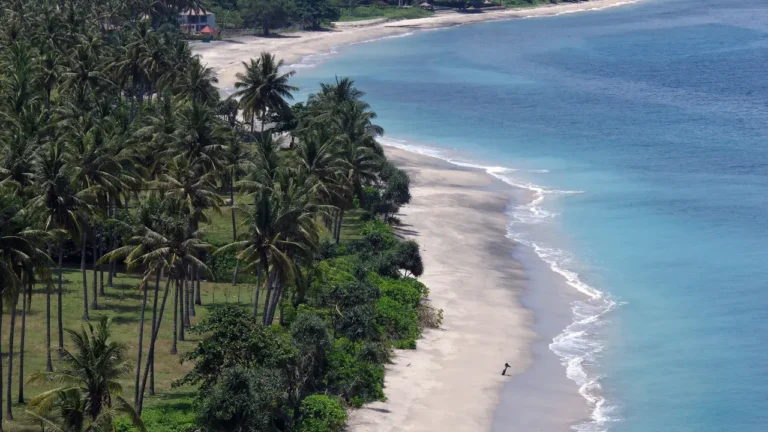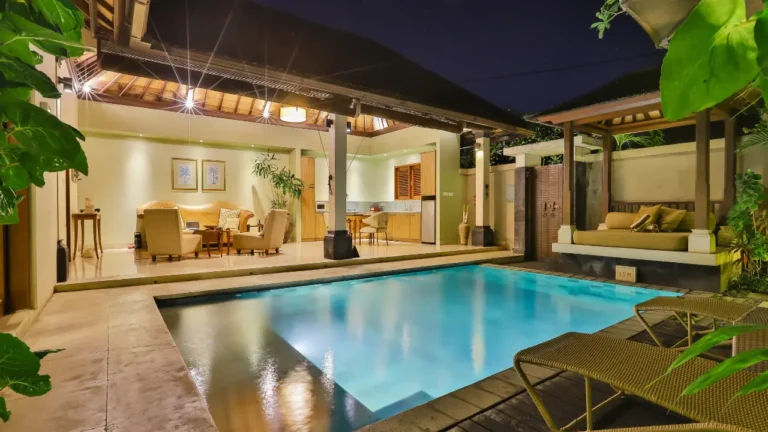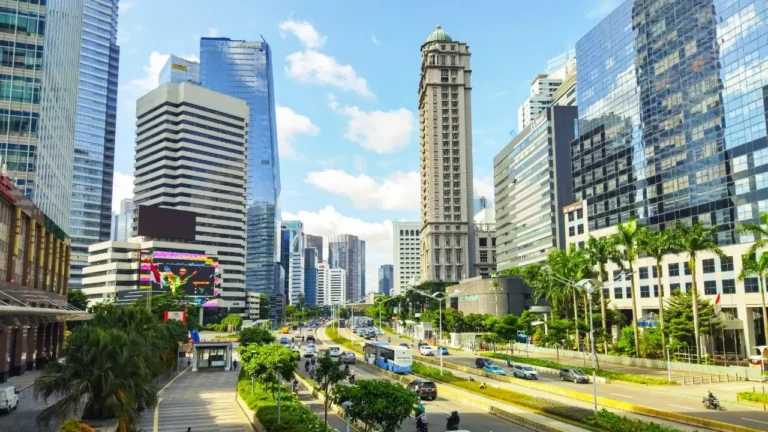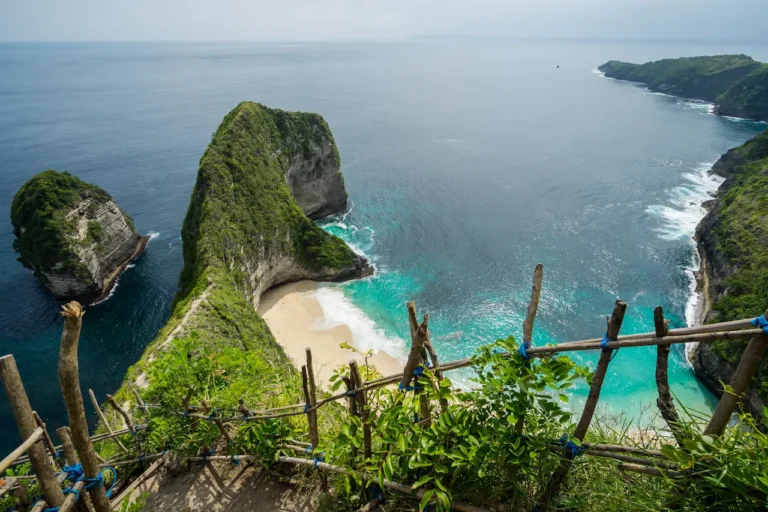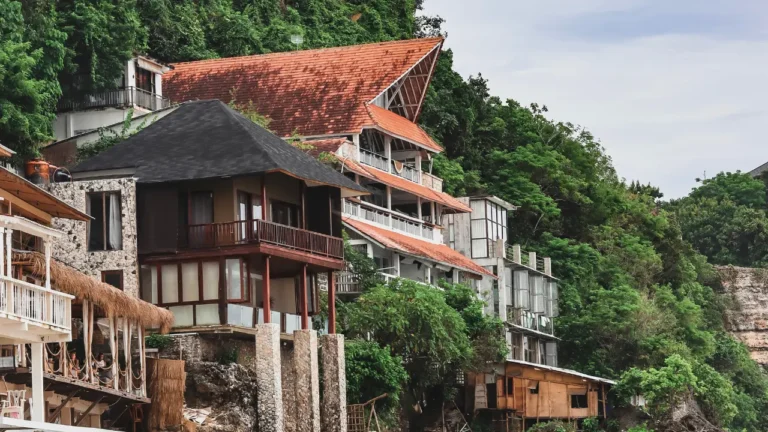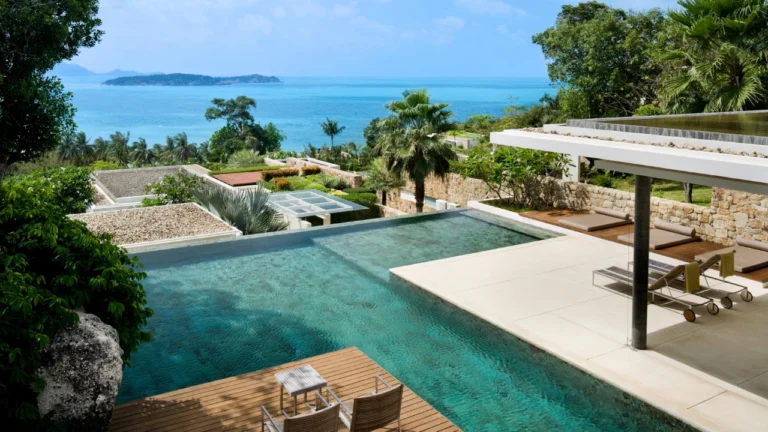Table of Contents
ToggleBuying a property in Bali can be very profitable and generate a high Return on Investment (ROI), but is it still the right time to buy? In recent years, Bali’s mature market has attracted global investment, leading to massive construction; however, this growth demands a proper strategy and necessary precautions to avoid common pitfalls and scams. This article directly addresses that crucial question.
We affirm that Bali’s unique appeal (culture, tourism, and growing resident population) makes it a consistently strong market, but success now hinges on strategic decisions. We guide you beyond the saturated hotspots (Canggu, Uluwatu, Ubud) to explore alternative, high-potential locations like Sidemen and Bali investment opportunities near future infrastructure projects (MRT, new airport).
Furthermore, we detail how the shift from transient tourism to permanent residency in Bali creates new opportunities for long-term expat rentals, offering higher, more stable returns than short-term Airbnb models.
Finally, we provide an essential checklist of six common mistakes to avoid, covering everything from checking developer permits and land titles (Pura, community ownership) to securing rights to lease extensions and ensuring comprehensive construction quality checks.
This is where ILA Global Consulting excels. For years, we’ve helped hundreds of international clients, including those investing in property in Bali, precisely navigate Indonesia’s legal, taxation, and investment complexities.
Our team’s blend of deep local knowledge and international best practices ensures compliant, strategic solutions, making us a trusted advisor for anyone building a sustainable presence in Indonesia.
Should You Invest in Bali or in Another Island?

Bali will always be Bali. Despite the government promoting other islands, Bali continues to attract more and more tourists each year. The lack of infrastructure doesn’t seem to be stopping people from visiting, or even moving to Bali.
Bali has something for everyone: culture, beaches, sports, nature, and parties. Other islands are, of course, offering beautiful scenery and interesting opportunities, but the culture, religion, and hospitality in Bali will never be competed with by other islands.
For a first project, Bali seems the most well-known and reassuring place to invest in Indonesia. The market is mature, and operators learn from their errors.
Make Navigating Real Estate in Indonesia Easy
Save time and money by letting ILA’s team of experts guide your real estate journey in Indonesia. We can help with due diligence, land title transfers, notary services, contract drafting and reviewing, building permits, various licences, and more.
Please find more information about our broad range of real estate services, or reach out today for a free consultation.
What Do You Need to Consider Before Investing in Bali?

Bali has multiple locations, and now that the market has less land to offer, or the price has increased, here are the points to be taken into consideration before investing in this island:
- The location promised by developers is sometimes not in the area promoted. It is not uncommon to see developers promoting Ubud when the location is 30 minutes from it. The same things apply to property in Canggu or Uluwatu as to property far from the hotspot.
- Look for alternative locations. For example, places like Kedungu are far from hotspots. In contrast, others like Sidemen offer a beautiful alternative to Ubud and have strong potential, with a high occupancy rate and limited accommodation.
- Look at the new projects, such as the MRT and the new airport. Those two projects might significantly change the Bali aspect, and the land around those spots might dramatically increase. Investing near the new airport can be a jackpot.
- Look at other islands in Bali, such as Nusa Penida and Lembongan.
Key Terms for Location Strategy in Bali Investment
| Term | Definition |
|---|---|
| Hotspot | The most popular and established tourist areas in Bali are Canggu, Ubud, and Uluwatu. Land prices are high, and available land is scarce. |
| Promised Location Discrepancy | A common issue is when developers market a property as in a major hotspot (e.g., “Ubud”) when the actual location is 30 minutes or more away, which can affect rental demand. |
| High Occupancy Rate | The frequency with which a rental property is booked. Sidemen is cited as having strong potential due to high demand and limited accommodation, suggesting a strong ROI. |
Is It Better to Invest in Long-Term Rental or Daily Rental?
Bali has changed, and so has the market. While a few years ago tourists were coming and leaving, Bali has now attracted many people from other countries who are looking to relocate to Indonesia and live in Bali with their families.
Bali is transforming from a tourist destination to a permanent residential destination, like Dubai. Given these changes, Bali offers opportunities to invest in properties to rent to people living here who cannot afford or are not willing to buy a villa.
For example, investing in Padonan, Tumbak Bayu, and Umalas could be madness for Airbnb, while investing in renting to expats willing to pay monthly or annually could be interesting. Other areas, like Kerobokan, are not tourist destinations, and it is becoming increasingly complex for investors to rent their properties on Airbnb.
However, transforming this investment into a long-term rental can be a good idea. Furthermore, some properties have a high return on investment since there is:
- No commission on Airbnb
- Legal license is easier in the long term and open to foreigners
- Lower cost as the tenant assumes the cost of electricity, maintenance, etc.
- No commission for the property manager
Bali is a market for property investment and will always be a great place to invest. However, there are some precautions to be taken before investing.
Key Terms for Bali Rental Strategy
| Term | Definition |
|---|---|
| Long-Term Rental | Renting a property to tenants (typically expats) on a monthly or annual basis. This strategy offers a more stable income and lower operational costs than daily rentals. |
| Daily Rental / Airbnb Model | Renting property to short-term tourists (daily or weekly). While historically profitable, it faces high competition in saturated areas and may require a more complex operating license. |
| Permanent Residential Destination | The transformation of Bali’s market from primarily short-stay tourism to attracting long-term residents and expats (similar to Dubai), creating sustained demand for annual rental properties. |
| Expats | People from other countries are moving to Bali to live and work. This demographic is the target market for stable, long-term rental investments. |
| High Return on Investment (Long-Term) | The financial benefit of long-term rentals often comes from reduced operational costs (tenant pays utilities/maintenance) and zero commissions from short-term booking platforms or property managers. |
| Non-Tourist Destinations | Areas like Kerobokan, Padonan, and Umalas are less desirable for short-term tourism but are excellent locations for long-term expat housing due to their proximity to schools and amenities. |
What Are the Common Mistakes to Avoid When Investing in Bali?

1. Choose the Correct Location to Invest in Bali
Bali is probably the highest hotspot with Canggu, Uluwatu, and Ubud. Developers now have difficulty finding land around the hotspot, or do not have sufficient investment to acquire land in the leading destination in Bali.
Clients who contact us receive offers from developers in areas sometimes far from the hotspot. Developers or real estate agents promote a location in Ubud, even though it is 30 minutes from the city center. Agents promise a location in Uluwatu, while the area is in Ungasan, Pecatu.
The location is crucial. Having a property offered at 80 or 90,000 USD in Kedungu will take much longer to be profitable. In comparison, a property at 160,000 USD in Canggu will probably be profitable faster than one that is much cheaper.
The critical point here is to be careful with the project located far from the hotspot, as it will be challenging to rent out the property. Areas like Padonan, Cemagi, and Nuanu are attractive, but in reality, they are far from the main tourist attractions. It looks close on the map, but in fact, you might need 30 minutes or more to reach the spot.
2. Check the Licence of the Developer and the Project
The recent case with Mr Thank you (a developer who scammed hundreds of investors) reminds us that investors can be scammed in Bali. Many developers promise high Returns on Investment while their projects are not yet legal. In our experience with all the due diligence we have seen, developers say they had a building permit, but in reality, the permit was not issued; they just applied.
3. Check the Ownership, Zoning, and Access
Access to the property can turn into a nightmare if you don’t correctly check. Ownership of land is sometimes unclear. The community sometimes owns land in Bali. Some lands are temporarily transferred by the Pura (temple), and to access the property, it is sometimes necessary to cross other lands. The unclear situation can lead to disputes and difficulty defining the property’s boundaries.
4. Check the Water Permit
Uluwatu is known for having no water. Access to water can be costly, as it requires paying for truck-delivered water tanks. Some developers try to drill for water underground without obtaining permits. Recent cases in Canggu have shown that some property owners have received visits from the police for non-compliance with environmental permit requirements.
5. Check the Master Lease Agreement and Extension Rights
Developers offer and promise 20-year extensions. As discussed in other articles, the extension is rarely guaranteed. There is no guarantee as long as the extension has been paid for and signed. Lease extensions in Bali can be difficult if the master lease between the landowner and the developer is not correctly secured.
A developer cannot offer you an extension if its own extension is not guaranteed. We have even seen developers sell a lease without having even finished paying their own. If the developer fails to pay the landowner, the landowner has the right to evict the person from the property.
6. Check the Penalty and Ensure Quality Check
Properties in Bali are beautiful for a specific time. Unfortunately, the construction standards are very low here. The architect’s renderings are beautiful, but the handover can turn into a nightmare or deteriorate after the first rainy season. We strongly recommend that the contract include a robust handover, with penalties for late delivery and a guarantee.
Key Terms for Avoiding Common Investment Mistakes in Bali
| Term | Definition |
|---|---|
| PBG (Building Permit) Fraud | A common scam in which developers claim to have a building permit, while in reality, they have only applied for it. Due diligence must confirm that the license has been entirely issued and approved. |
| Pura / Community Land | Land in Bali that is temporarily owned or managed by the local community or temple (Pura). Investing in or relying on access through such land can lead to ownership disputes and unclear boundaries. |
| Water Permit Compliance | The legal requirement to obtain permits before drilling for groundwater. Failure to do so (common in water-scarce areas like Uluwatu) can lead to penalties and police visits for non-compliance with environmental rules. |
| Master Lease Agreement | The original lease contract between the developer and the landowner. The developer cannot legally guarantee a lease extension to a buyer unless this master lease contract is already secured and properly registered. |
| Eviction Risk (Leasehold) | The risk that a landowner has the right to evict a sub-lessee if the primary developer (master lessee) fails to make payments or honor the terms of the master lease agreement. |
| Handover Penalty & Guarantee | A crucial contractual clause specifying financial penalties for the developer in the event of late delivery and clearly defining the guarantee period for construction quality, given Bali’s often low standards. |




